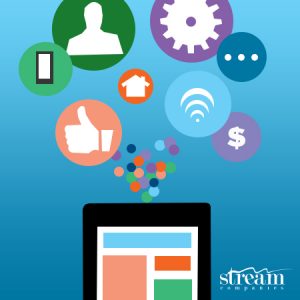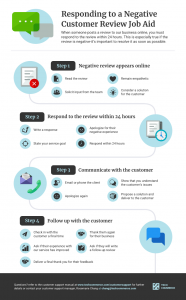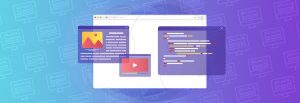Communication needs to be built on how the customer sees it, not whether it’s coming from sales or marketing.
In my last article, I explained four things you must do to win a prospect’s trust before you ever mention your product or service. Now, we will look at the four next steps that will help you convert them into a sale and how to grow the relationship once you’ve done that.
1. Filter
Having proven your value to the customer(s), you now deepen the relationship with engaged prospects. At the same time, you are also identifying and prioritizing actual leads based on their behavior. Those behaviors are indicators of interest and intent. This stage is crucial in clarifying the readiness and interest level of each prospect. That, in turn, allows for a more tailored and effective engagement.
This phase depends on a meticulously designed, organized set of outreach activities designed from a holistic perspective. Don’t think of these interactions as being either sales or marketing efforts. Email is email. LinkedIn is LinkedIn. A webinar is a webinar. Organizations think when marketing sends an email, it’s a marketing email. And when Sales sends an email, it’s prospecting. While this is technically correct, it bifurcates the view of the customer.
It prevents you from understanding how the customer is seeing this. To them, it’s all words coming from one source. Those words can’t be either sales or marketing words. These communications need to be so well-integrated that it’s impossible to tell which function created them. Approaching this any other way means you don’t understand the customer well enough.
You need to look at all the tools you have and organize a communication plan that focuses product interest through a single company, not departmental, lens. The key is a time-based behavioral scoring model layered atop a firmographic grade. It quickly tells you who’s been engaging with what within your desired window of time and, thus, who you need to research.
Email campaigns become a key tool, not just for disseminating information, but for gauging response and engagement levels. Personalized follow-ups based on the prospect’s previous interactions with content or product pages allow for a more nuanced approach.
Additionally, targeted content that aligns with a prospect’s specific interests or behaviors can be used to further engage and qualify their interest. If a prospect frequently visits a particular product page or spends time on resources related to specific features, you know how to tailor your content or outreach.
It’s quite important to call out that setting the proper expectations during this string of communication will make or break the success in the following stages.
2. Convert
Conversion is made easier because you’ve identified a prospect’s intent through their behavior. Intent precedes the necessary mental conclusion of “I want this” which precedes the conversion. This is important to remember because, surprisingly, the goal is not converting the sale. It is finding the right order of communications that gets the prospect to choose you.
In my last article, I explained the importance of nailing down your value proposition. Well, this portion is where they agree with your value proposition, trust it enough to get the buy-in required for purchase, and want it enough to put it into practice and experience your value proposition.
As with previous phases, this one is not about hard selling. It’s about guiding the prospect to the conclusion that your product is the right choice for them. The biggest theme within this phase should be authenticity. It’s a delicate conversation. The prospect is interested but skittish and it’s your job to alleviate the anxiety that is often common during these stages.
Offering incentives can nudge those on the cusp of decision-making, providing the right amount of motivation to tip the scales. Streamlining the purchasing process is equally crucial. At this stage, any unnecessary steps or friction can be a major deterrent. Therefore, ensuring a smooth, hassle-free transaction is key to capitalizing on the prospect’s readiness to purchase.
As I always say, “Stop making your prospects a victim of your process.”
3. Retain
So you made the sale, smacked the gong, and tossed back a cold one to celebrate the win. Now what? Now your customer gets to experience your value proposition firsthand.
This phase is about nurturing the relationship post-purchase, ensuring customers feel valued and continue to find relevance in the product or service. The primary goal is fostering a deep, ongoing engagement so customers see your company as a long-term partner.
Strategies here center around continuous engagement and providing exceptional value. The amount of data from product usage these days is unending. So customer behaviors and overall results from using the product should tell you if you’re hitting the mark. Doing this requires offering excellent customer support, and ensuring any issues or queries are addressed promptly.
I recommend that companies implement a ‘Service Recovery Plan’ to address this. It can be a very useful tool to ensure uniform responses to any scenario should things go wrong.
Regular updates, whether through product enhancements, informative content, or community engagement, can keep the product relevant and top-of-mind as well as add more context to how the product can be applied. The customer’s journey doesn’t end with the purchase; in many ways, it’s just beginning. Retention is about building a relationship that extends beyond the transaction. It involves understanding and anticipating customer needs, preferences, and feedback, and using this insight to continually refine and improve the customer experience.
4. Expand
Expansion is about strategically growing your share of the customer’s wallet. It requires nuance based on understanding when and how to present upselling or cross-selling opportunities. The objective here is to enhance your value to the customer by aligning additional offerings with their evolving needs.
Communications around expansion require a keen awareness of the customer’s current use of your product, their satisfaction levels and emerging needs. This likely involves analyzing usage data, gathering feedback and knowing about changes in their business environment.
Upselling and cross-selling are not just about pushing more products or services to hit your team’s quota, either. They are about acknowledging the customer’s opportunities and offering solutions that genuinely add value to their specific use case and end-user flow. This could mean introducing advanced features, additional services, or complementary products that align with the customer’s growth trajectory long before they even need them.
The post 4 steps to turn a prospect into a loyal customer appeared first on MarTech.
MarTech(1)








